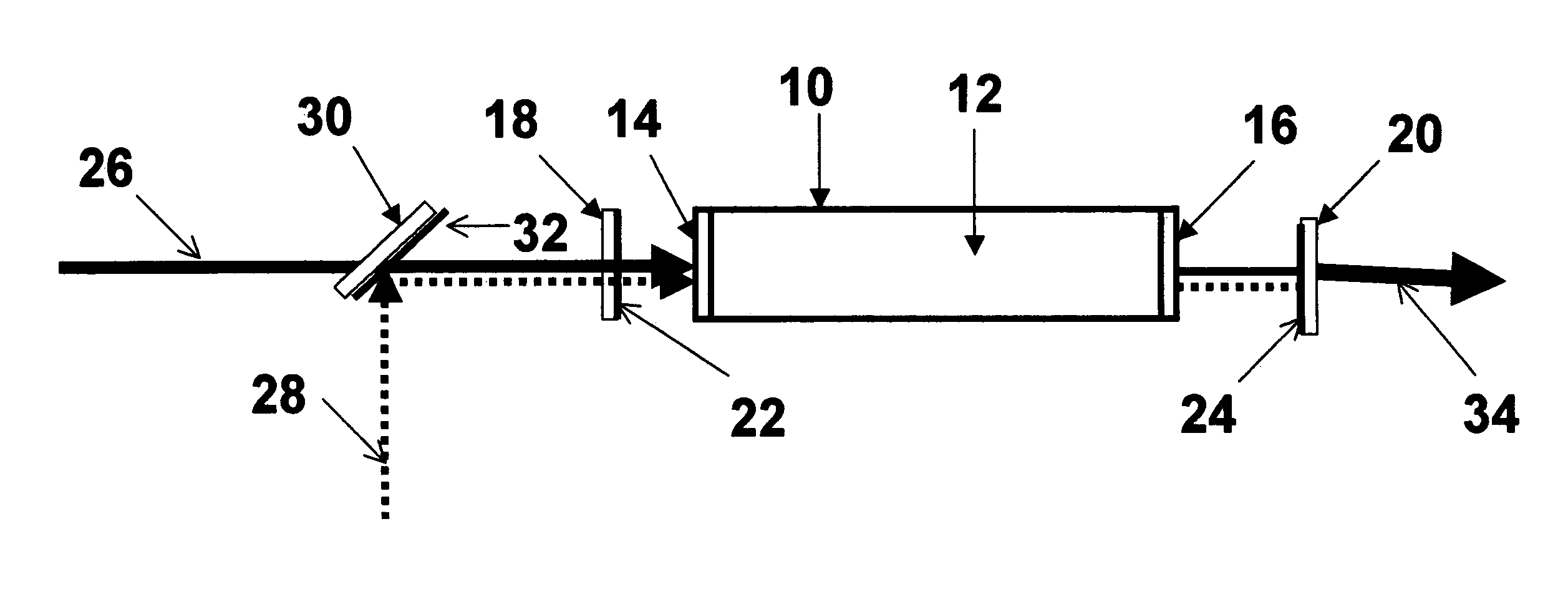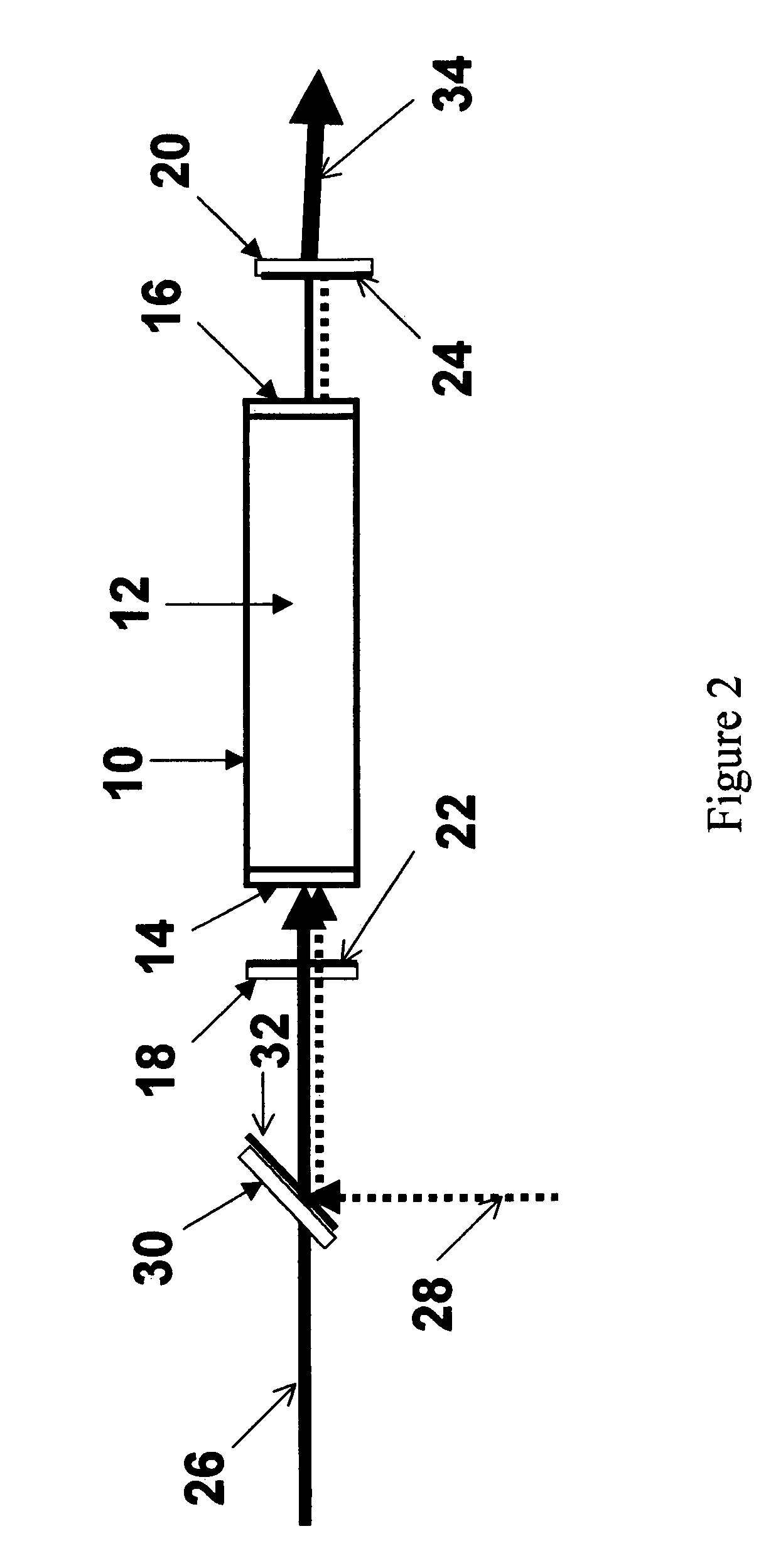Optically-pumped DUV atomic vapor lasers
a laser and atom vapor technology, applied in the field of deep ultraviolet (duv) lasers, can solve the problems of adding complexity and expense to exposure lasers, increasing the cost of ownership of lithographic exposure sources, and two-photon optical damage in optical elements
- Summary
- Abstract
- Description
- Claims
- Application Information
AI Technical Summary
Benefits of technology
Problems solved by technology
Method used
Image
Examples
Embodiment Construction
[0038]FIG. 1 shows the working energy level scheme of a group IIB atomic vapor medium used in the DUV-OPAVL. Six primary electronic levels are depicted, labeled 1 through 6. Initially the atomic vapor is quiescent and all vapor atoms reside in the ground level, labeled 1. The radiation from a first “drive” or pump laser whose output wavelength, λ13,pump1, substantially matching that of the atomic vapor transition labeled 1–3 is propagated into the vapor, exciting vapor atoms from the ground level 1 to the level labeled 3. With an appropriate buffer gas or a mixture of buffer gases, such as helium and nitrogen, mixed in with the atomic vapor, the electron population excited into level 3 will redistribute into the adjacent energy levels labeled 2 and 4 upon collisions with the buffer gas atoms and / or molecules, approaching a Boltzmann population distribution among levels 2, 3, and 4 characterized by a temperature substantially equal to the buffer gas translational temperature. The con...
PUM
 Login to View More
Login to View More Abstract
Description
Claims
Application Information
 Login to View More
Login to View More - R&D
- Intellectual Property
- Life Sciences
- Materials
- Tech Scout
- Unparalleled Data Quality
- Higher Quality Content
- 60% Fewer Hallucinations
Browse by: Latest US Patents, China's latest patents, Technical Efficacy Thesaurus, Application Domain, Technology Topic, Popular Technical Reports.
© 2025 PatSnap. All rights reserved.Legal|Privacy policy|Modern Slavery Act Transparency Statement|Sitemap|About US| Contact US: help@patsnap.com



